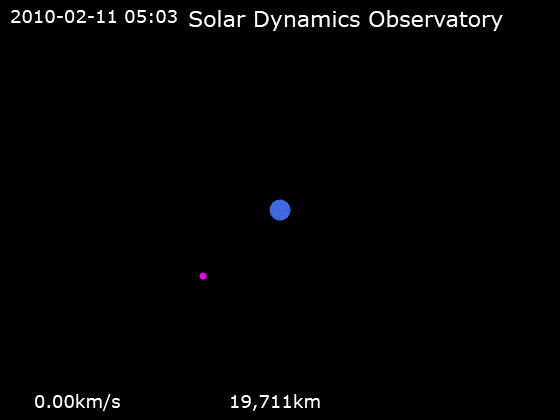Revolutionary Solar Imaging Technology Reveals Sun's Corona in Unprecedented Pink Swirls

Scientists have achieved a groundbreaking milestone in solar observation, capturing the most detailed images ever recorded of the Sun's corona using revolutionary adaptive optics technology. The stunning visuals, resembling swirling pink liquid with floating tufts and violet plumes, represent a quantum leap in our ability to study our nearest star and understand its mysterious atmospheric phenomena.
As published in Nature Astronomy, this pioneering 'coronal adaptive optics' technology has produced the most astonishing, clearest images and videos of fine-structure in the corona to date. The breakthrough comes from a collaborative effort between scientists at the U.S. National Science Foundation's National Solar Observatory (NSO) and the New Jersey Institute of Technology (NJIT), who developed an innovative system that overcomes the long-standing challenge of atmospheric interference.
The new coronal adaptive optics system, deployed at NJIT's Big Bear Solar Observatory on the 1.6-meter Goode Solar Telescope, has dramatically improved resolution from the previous limit of 620 miles to an unprecedented 40 miles. The new coronal adaptive optics system closes this decades-old gap and delivers images of coronal features at 63 kilometers resolution—the theoretical limit of the 1.6-meter Goode Solar Telescope, according to Thomas Rimmele, NSO Chief Technologist who built the first operational adaptive optics system.
The turbulence in the air severely degrades images of objects in space, like our Sun, seen through our telescopes. But we can correct for that, explained Dirk Schmidt, NSO Adaptive Optics Scientist and lead developer of the system. The technology utilizes a deformable mirror that reshapes itself 2,200 times per second to counteract image degradation caused by atmospheric turbulence, effectively removing the blur that has frustrated astronomers for decades.
The resulting images reveal extraordinary details of solar phenomena that were previously invisible to ground-based telescopes. Among the most spectacular discoveries are examples of coronal rain, where plasma cools and condenses into massive globs before cascading back to the Sun's surface like suspended waterfalls. The system has also captured solar prominences in unprecedented detail, showing large, bright structures that arch and loop from the Sun's surface, twisted and shaped by powerful magnetic fields.
We report here a large portion of off-limb coronal rain material with observed scales below 100 km, demonstrating the system's ability to resolve features smaller than 62 miles across. This level of precision represents what researchers describe as "pinpoint accuracy" in solar terms, opening new possibilities for understanding the Sun's complex atmospheric dynamics.
The corona, stretching millions of miles into space, serves as the staging ground for the Sun's most violent outbursts, including solar storms, solar flares, and coronal mass ejections. These phenomena significantly impact Earth's climate and can wreak havoc on electronic systems, making detailed study of the corona crucial for space weather prediction and understanding solar-terrestrial interactions.
One of the most enduring mysteries in solar physics that this technology may help solve is the coronal heating problem. The corona reaches temperatures of millions of degrees Fahrenheit, despite sitting thousands of miles above the Sun's surface, which maintains a relatively cool 10,000 degrees. This temperature inversion has puzzled scientists for decades, and the new high-resolution observations may provide crucial clues to understanding the underlying mechanisms.
Research conducted by the NSO and NJIT teams, developed by researchers at the National Solar Observatory (NSO) and the New Jersey Institute of Technology (NJIT), the technology removes the blurring effects of Earth's atmosphere, allowing ground-based telescopes to see the Sun's corona with unprecedented clarity. The system's capabilities extend beyond static imaging, producing remarkable videos that show the dynamic nature of solar phenomena, including rapidly evolving plasma streams and the internal turbulent flows within solar prominences.
The breakthrough represents more than just improved imaging technology; it marks the beginning of a new era in solar physics research. As coauthor Philip R. Goode at the CSTR noted, "With coronal adaptive optics now in operation, this marks the beginning of a new era in solar physics, promising many more discoveries in the years and decades to come." The technology's ability to reveal previously unobserved features suggests that many more discoveries await as researchers continue to analyze the wealth of data being collected.
The implications of this research extend far beyond academic curiosity. Understanding solar phenomena is crucial for predicting space weather events that can affect satellite communications, power grids, and navigation systems on Earth. The corona's solar wind, which sweeps across the entire solar system, also plays a vital role in shielding our planet from harmful cosmic rays, making detailed study of these processes essential for space exploration and Earth's protection.
This research was supported by the National Science Foundation and represents a significant advancement in ground-based solar observation capabilities. The success of the coronal adaptive optics system demonstrates the potential for continued improvements in astronomical imaging technology, potentially rivaling space-based observations while maintaining the advantages of ground-based accessibility and maintenance.
Advertisement
Tags
Advertisement





